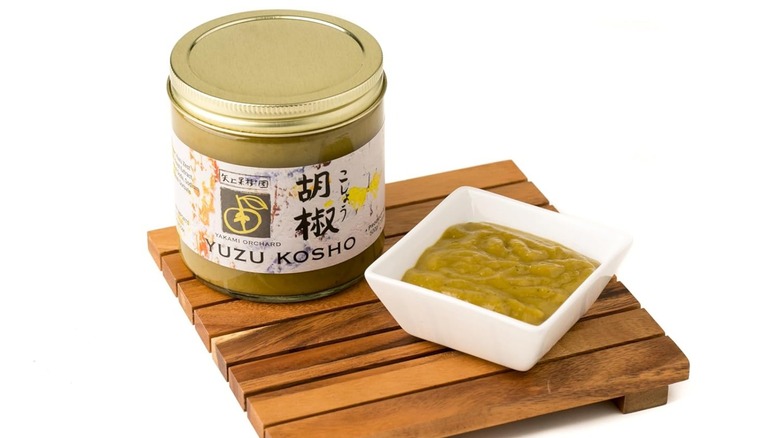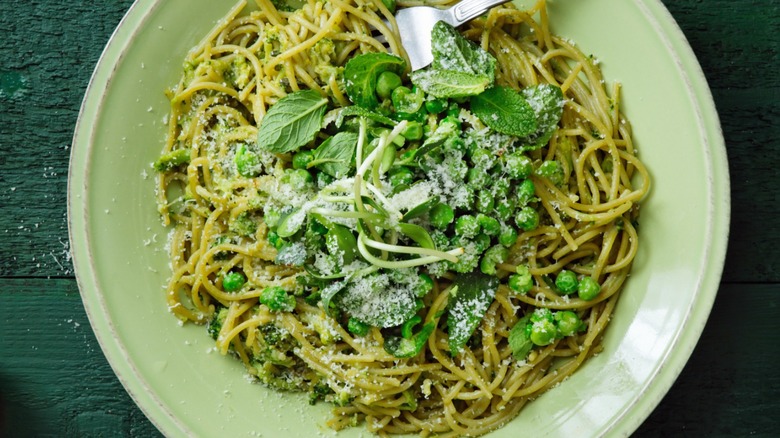The Big Mistake People Make When Adding Yuzu Kosho To Pasta
We may receive a commission on purchases made from links.
Yuzu kosho is one of those ingredients that seem to be all the rage with celebrity chefs, but this Japanese condiment has yet to reach the level of something you can find on the shelves at your local Kroger. Still, this sauce (or rather, paste) makes for an intriguing addition to ramen noodles or other types of pasta. Namiko Hirasawa Chen, who blogs over at a site called Just One Cookbook, is a big fan of yuzu kosho, but warns that if you plan to use it in a pasta recipe, you should avoid making this common condiment mistake: overdoing it.
Nami tells Mashed, "Many people underestimate how flavorful and spicy yuzu kosho is," and further compares it to wasabi in its intensity. She feels that the best way to add it to a pasta sauce is to first take a tiny taste to see how you like it, then, if you wish to proceed, use just a small amount. As she notes, "You don't need to cook this condiment," which means that you can add a little more at any point in the process, even if the sauce is done simmering.
How to add yuzu kosho to pasta sauce
Yuzo kosho comes in two different varieties, green and red. The first one is made with the zest from unripe (green) yuzu fruits and green chiles and is described as the spicier and tangier of the two condiments. Red yuzu kosho, which is made from ripe yellow yuzu and red peppers, is slightly more mellow. Either condiment can be combined with oil or butter and soy sauce to make a very simple, yet flavorful, pasta sauce — try using 3 tablespoons of fat and 2 tablespoons of soy sauce (or ponzu, for extra yuzu) for each pound of pasta, along with a few teaspoons of yuzu kosho. Start with ½ teaspoon at first, tasting before you stir in another ½ teaspoon as needed.
Yuzu kosho, either red or green, makes a great addition to spaghetti aglio e olio, which is sauced with a simple mixture of garlic and crushed red pepper sauteed in olive oil. The Japanese condiment also works well in a cream-based sauce such as one for pasta primavera or fettuccine Alfredo. Prepare any of these sauces as you ordinarily would, whether from scratch or, in the case of the last-named one, opening a jar. As the sauce is cooking, stir in some yuzu kosho until it tastes right to you. You may wind up using a tablespoon or more if you enjoy the flavor, but as Namiko Hirasawa Chen advises, it's best to work your way up gradually.

